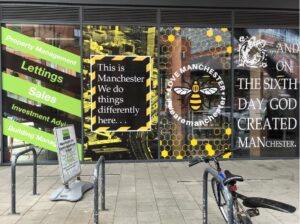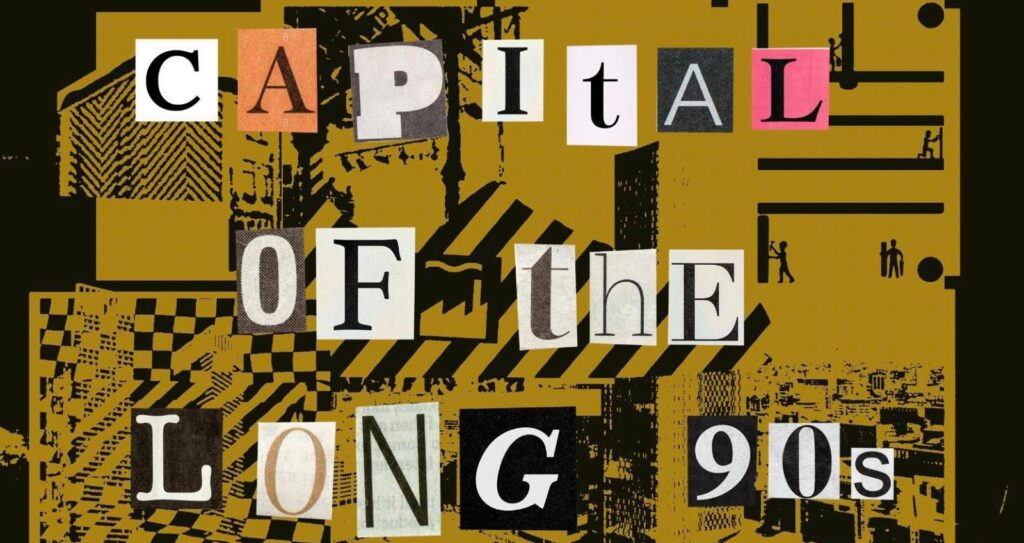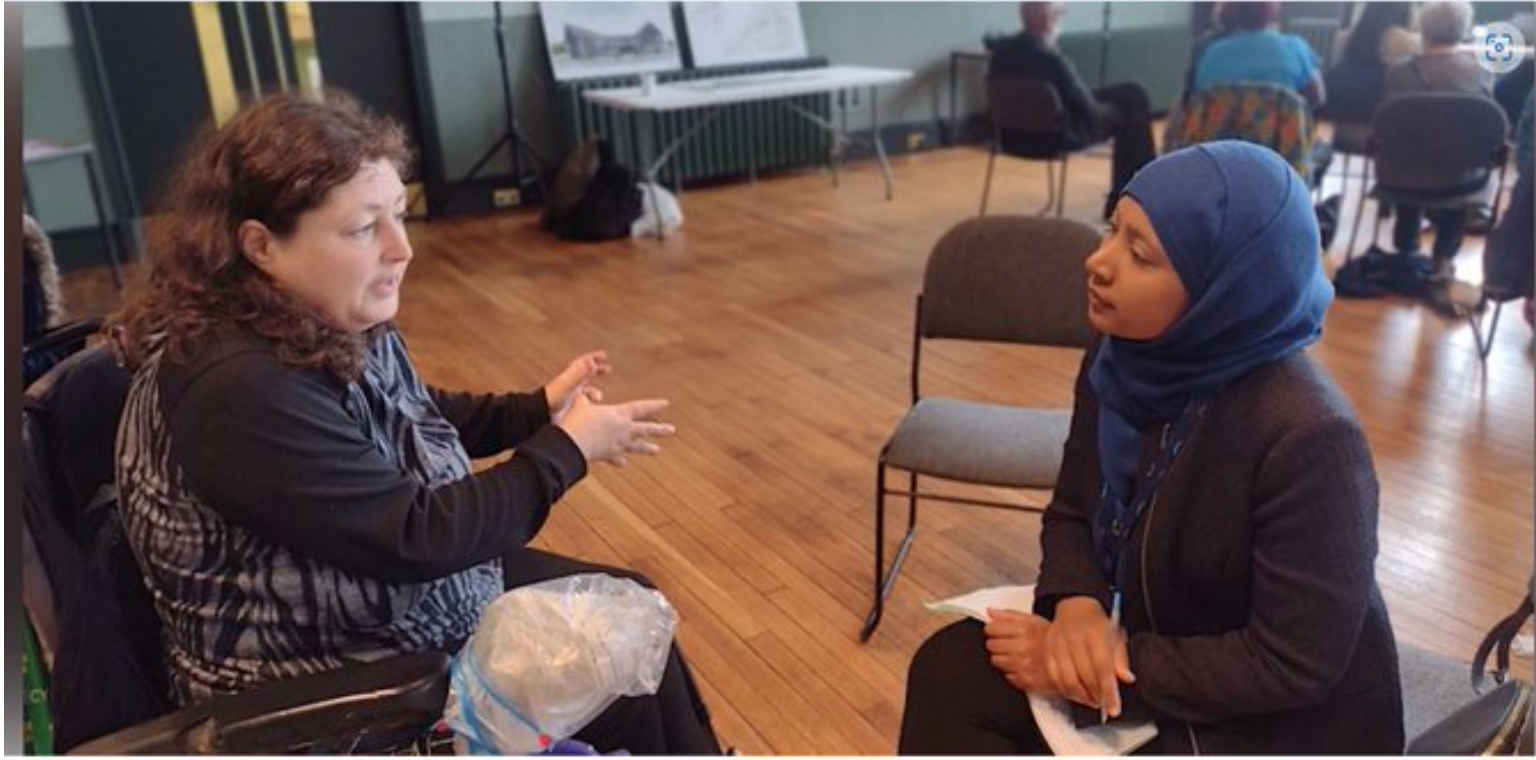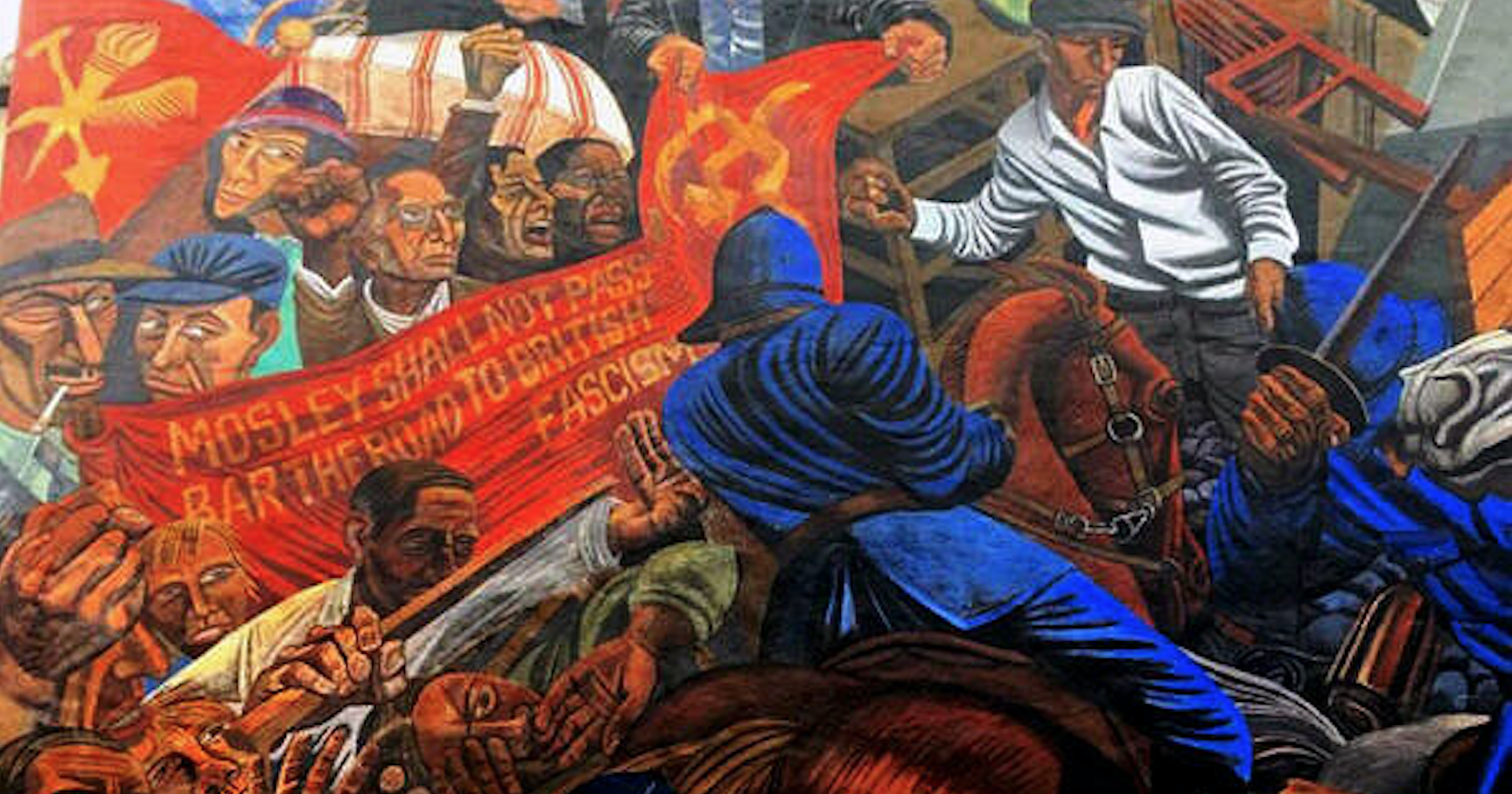By Tom Gillespie, Isaac Rose, Jonathan Silver
Factory opening
On the left bank of the River Irwell, where the Granada TV studios once stood, is a construction site ensnared in delays, overspend and hubris. Dubbed ‘The Factory’ in a not-so-subtle reference to Tony Wilson’s iconic record label, this site is the new permanent home of Manchester International Festival (MIF). Designed by ‘starchitect’ Rem Koolhas, and with its origins George Osborne’s ‘Northern Powerhouse’ agenda, it forms the centrepiece of a cultural regeneration strategy that could be called ‘Bilbao-on-Irwell’. If you believe the hype, it will be one of the ‘world’s most ambitious art spaces’, a place ‘where we invent tomorrow, together’. It is also £76m over budget, with £50m of Manchester City Council’s own money sunk into the project, alongside central government’s contribution of £78m.
Who stands to benefit from the public funding ploughed into The Factory? One significant financial interest is the property developer Allied London who acquired the Granada Studios site during their development of the adjacent ‘Spinningfields’ business district. Allied London plan to develop the site around The Factory into St John’s, a 25 acre mixed-use neighbourhood including apartments, hotels, offices and retail space.
Geographer David Harvey argues that urban cultural spaces often come to serve the interests of capital accumulation by attracting new flows of investment and inflating land rents. In the case of Manchester, the presence of The Factory is certain to increase property values on the St John’s site. Despite being almost entirely funded by the public, therefore, it is large developers that are poised to reap the financial benefits from this project: public funding for the arts is being used to create the conditions for private profit.
The Factory raises questions about the type of city that is being built through Manchester’s pursuit of culture-led urban regeneration. The strategy of instrumentalising culture in order to attract real estate investment first adopted in the 1990s has succeeded in transforming the city centre beyond recognition. However, this approach has also fueled an increasingly brutal housing crisis characterised by speculative inflows of finance capital, skyrocketing housing costs, the displacement of working class communities, a social housing waiting list of over 13,000, and large numbers of people living in poor quality temporary accommodation.
The Factory is a useful starting point for understanding Manchester’s unequal urban geography because it embodies the city’s infatuation with commodifying its late 20th century musical history in the service of property development. This is a model that combines Blairite urban regeneration with ubiquitous references to the city’s 1980s and 90s pop cultural heyday. Once the cradle of industrial capitalism and the birthplace of radical philosophy, politics and culture, 21st century Manchester is strangely trapped in a 90s groundhog day; still high from the Madchester scene and fetishising a nightclub that was demolished and rebuilt into apartments 20 years ago. Crucially, this staid approach has no answers to the city’s contemporary housing crisis.
Capital of the long 90s
The defeat of Corbynism in 2019 and Keir Starmer’s subsequent election as Leader of the Labour Party has generated renewed discussion around Jeremy Gilbert’s concept of the ‘long 90s’; the idea that we are all trapped in a cultural and political 1990s timewarp. Culturally, this takes the form of a stasis evident in the lack of musical innovation since the turn of the millennium. Politically, it is manifested in the persistent centrist belief that neoliberal economic globalisation and technocratic liberal democracy represent a post-ideological ‘End of History’, and that social problems are best addressed through the operation of markets.
At the national scale, Starmer’s Labour leadership, with its abandonment of Corbynite social democracy and increasingly farcical lack of policy ideas, does appear to represent a return to a post-Cold War centrist politics in which managerial ‘competence’ is deemed more important than ideological substance. But what does the continuing influence of the long 90s look like at the urban scale? We contend that Manchester, a city preoccupied with late 20th century cultural references and trapped in a Blairite urban regeneration model, is the capital city of the long 90s. The socio-spatial outcome of this cultural and political stasis is an increasingly unequal city and a deepening housing crisis.
The origins of the current leadership in Manchester lie in the takeover of the Council by the New Left, led by Graham Stringer, in the 1980s. While more famous iterations of this occurred in Sheffield, London and Liverpool, Manchester was also swept up in this generational challenge to the older paternalistic Labourism.[1] In 1984, the Left took control of the Council after a bitter four year struggle with the right wing leadership. This Left had a social base in the burgeoning liberation social movements in the city and in the white-collar, public sector trade unions. Once in power, they advanced a political agenda of representation; defending the gay community from police violence; creating an equal opportunities committee structure; and attempting to develop decentralised neighbourhood services. Economically, they spoke of a prefigurative socialist municipalism; planting the seeds of a new society at city-level.[2] Yet this strategy was predicated on the expectation that Labour would soon win a general election, ushering in a political shift across the country and releasing funding to allow the Council to pursue its municipal socialist policies. With Labour’s defeat in 1987, this route was walled off and the political struggle with Thatcherism decisively lost. With it, the rug was pulled from under the strategy of municipal socialism.
In its place, the Council pursued a strategy of ‘urban entrepreneurialism’: embracing public-private partnerships and competing with other cities in order to attract funding and investment to regenerate a city centre suffering the effects of deindustrialisation. This involved the Council partnering with private developers to transform central Manchester into a high-density residential area through the construction of private apartments for young professionals. The dramatic transformation of the city centre since the early 90s led architecture critic Owen Hatherley to describe Manchester as ‘a flagship for urban regeneration’. Politically, entrepreneurial Manchester came to be ruled by a ‘narrow governing coalition’ of the Council leadership working closely with property developers. This shift of the late 80s, as the Council faced up to the twin realities of Tory rule in Westminster, and the rapid decline of the city’s manufacturing base, laid the groundwork for the Manchester of today. While Stringer spearheaded this shift, it is his successor Richard Leese, Leader of the Council since 1996, who is most closely associated with Manchester’s entrepreneurial turn.
The ascent of the New Left to political power within the Town Hall coincided with a high tide of dynamism within Manchester’s artistic and musical landscape. Factory Records and the Haçienda are well known, but these represent merely a fraction of a complex ecosystem of venues, record labels, pirate radio stations, pub siderooms and artists studios. The roots of Manchester’s house music scene of the 1980s lay in Black clubs in Hulme and Moss Side, which from the late 70s onwards were playing the new music coming out of New York and Chicago. Undergirding all this cultural innovation was a crucial material factor: cheap space. This was typified by the role Hulme’s crumbling brutalist council estate played in incubating the city’s now mythic post-punk scene of the 1970s-80s. Despite the habitual references to Factory Records and the Haçienda in urban boosterist discourses, there is a persistent sense that Manchester’s elite rather miss the point of what enabled the innovation of this era, and where the roots of the culture were. As DJ and writer Dave Haslam observes, ‘The Haçienda wasn’t a disco version of the Trafford Centre.’
The Council’s entrepreneurial strategy involved the commodification and commercialisation of public space; a cleanup of the rougher edges of urban culture; and securing the city centre as a playground for consumption. This leant heavily on the ideas of Richard Florida, high theorist of neoliberal urban boosterism, who argued that for cities to compete globally they had to be successful in attracting what he termed the ‘creative class’; people in professions as wide and varied as ‘scientists, poets, actors, writers, finance, legal, healthcare and wealth management.’ By growing these sectors, and focusing on ‘the three Ts — Technology, Talent and Tolerance’, cities could rise up the global rankings and attract inward capital investment, particularly into real estate. New Labour heavily promoted this form of regeneration, which was enthusiastically embraced by Manchester. While this approach is hardly unique — geographer Oli Mould describes the creative city agenda as a ‘systematic requirement’ of contemporary urbanism — Manchester was praised by Florida himself in 2003 as the UK’s most ‘creative’ and ‘enterprising’ city.
Who led this transformation? Although the Council leadership were key, they were situated within a wider assemblage of actors across the city’s emerging culture and real estate complex. Hatherley refers to them as ‘a strange 'post-rave urban growth coalition’ of ex-modernists, ex-Situationists, ex-punks and ex-socialists’. Perhaps nobody better epitomises this trajectory than Tom Bloxham, who moved from selling posters and music to selling ‘quirky’ flats. Urban Splash, the company he founded, has played a key role in the gentrification of the central neighbourhood of Ancoats, contested by residents’ struggle to preserve historic community infrastructure. More broadly the company has acted as a major cheerleader for Manchester’s culture-led regeneration, and Bloxham is now Chair of the board of MIF and The Factory.

Over time, urban regeneration and real estate investment has cannibalised the conditions that made Manchester‘s late 20th century cultural renaissance possible, reducing ‘culture’ to a narrow, elites-only affair, perhaps best symbolised by MIF. Hatherley observes how Manchester’s success in mobilising its musical heritage in the service of urban regeneration has had a stultifying effect on cultural innovation in the city: ‘Manchester — capital of regeneration with its loft apartments, its towering yuppiedromes, its titanium-clad galleries — has produced virtually no innovative music since A Guy Called Gerald’s Black Secret Technology in 1995’.[3]
This can be seen in Capital and Centric’s redevelopment of Crusader Mill as profiled in BBC2’s Manctopia series. This development pushed out nearly 100 artists — the largest artists studios complex outside of London — and the last of the South Asian textile businesses operating out of the mill, to be replaced by a series of ‘pop up culture’ events. These temporary cultural activities were designed to make this “Red Light’ area a desirable place for its future home buyers: the developer, Tim Heatley was caught on camera expressing his wish to sweep away the sex workers that have used the area for decades. The gentrification of Crusader Mill was put under the spotlight by former resident artist Sam Meech. And this particular property company is not finished there, with Talbot Mill in Castlefield also becoming a victim of the real estate boom. There are a series of other closed cultural spaces (and more on the way) across the city that have left artists and musicians without facilities. While the Council poured tens of millions into the Factory, existing and proposed community spaces such as the Ancoats Dispensary, the Nello James centre, the Moston Miners Club and the Hulme Hippodrome struggled to raise much smaller amounts to use culture to transform working-class communities.
From house music to housing crisis
How does Manchester’s status as the capital of the long 90s relate to the housing crisis we see unfolding in the city today? The strategy of the Council has remained unchanged since the 1990s when it sought to regenerate a city trapped in terminal post-industrial decline by attracting investment to transform the city centre. This process has globalised significantly since the 2008 financial crisis, and the Council has successfully attracted investment from Abu Dhabi and Hong Kong. However, a narrow focus on building private apartments for market rent or sale has contributed to growing housing unaffordability in the city. Despite hopes that the wealth generated would trickle down to the wider city’s residents, urban regeneration has in fact deepened spatial inequalities by creating ‘a kind of parallel, private new town in the central city’ surrounded by deprived urban neighbourhoods.
Local campaign group Greater Manchester Housing Action (GMHA), with which we are all involved, has been at the forefront of contesting Manchester’s neoliberal urban development model. GMHA has published critical research on the processes of financialization and privatisation that have contributed to growing urban inequalities in the city. The campaign’s vibrant webspace hosts a kind of think-tank from below, full of ideas and debates from across the housing movement covering issues as broad as the struggles of GRT communities to the revolving door of councillors working for developers to the economics of student housing. GMHA has also been active in organizing around various struggles: supporting a residents’ campaign to fight plans to build Purpose Built Student Accommodation on top of the last pub in Hulme; leading opposition to plans for co-living developments in the city centre; co-ordinating a campaign to reinstate the Council’s suspended planning committee; opposing the government’s planning reforms and calling for Andy Burnham to establish a Land Commission.
These campaigns sit within a citywide assemblage of local groups from media co-operatives to tenants unions to the climate movement. Across the wider region we enviously watch local politicians consciously breaking with the long 90s by rejecting neoliberal urban development approaches that enable the extraction of wealth by big capital. Most high profile are the experiments with ‘community wealth building’ in Preston; but we may also look to attempts to expand the urban commons through the Liverpool Land Commission; and, closer to Manchester, Mayor Dennett’s ‘sensible socialism’ in Salford, which has as its centrepiece the construction of council housing.
Within Manchester itself, a coterie of left wing councillors have begun to challenge the long 90s model of urban growth — sometimes with success. A few policy shifts have been notable in response to this pressure. For example, the Council is now planning to build its own affordable housing on public land. Is this a belated acknowledgement that the long 90s model of relying on the private sector is busted? Time will tell.
Those pushing for an alternative vision of a city filled with beautiful, low-carbon social housing, independent cultural venues and public green space continue to run up against the buttress of political power in the city, led by figures who emerged in the 80s and govern as if we are still living in the neoliberal 90s. In a Centre for Cities podcast Council Leader Richard Leese spoke about the local Labour Party he confronted in the 1980s: “It was effectively an old guard, complacent, very paternalistic and very patronising - certainly as far as the city was concerned… And a new wave who wanted to change things ... Who wanted a different approach.” Today, it is time for Manchester to finally move beyond the long 90s generation and mode of governing to embrace a radical approach appropriate to addressing the major challenges of our times.
[1] The wider ‘New Urban Left’ is surveyed in Wainwright, Labour: A Tale of Two Parties, 1987.
[2] S. Quilley, ‘Manchester First: From Municipal Socialism to the Entrepreneurial City,’ International Journal of Urban and Regional Research, Vol 24.3, 2000.
[3] O. Hatherley, The New Ruins, Verso, 2010, p. 120
Tom Gillespie is Hallsworth Research Fellow at the University of Manchester.
Isaac Rose is an organiser at the Greater Manchester Tenants Union.
Jonathan Silver is Senior Research Fellow at the University of Sheffield.
Cover image: Jonathan Tomlinson.
This article originally appeared on Verso.
28 June 2021






